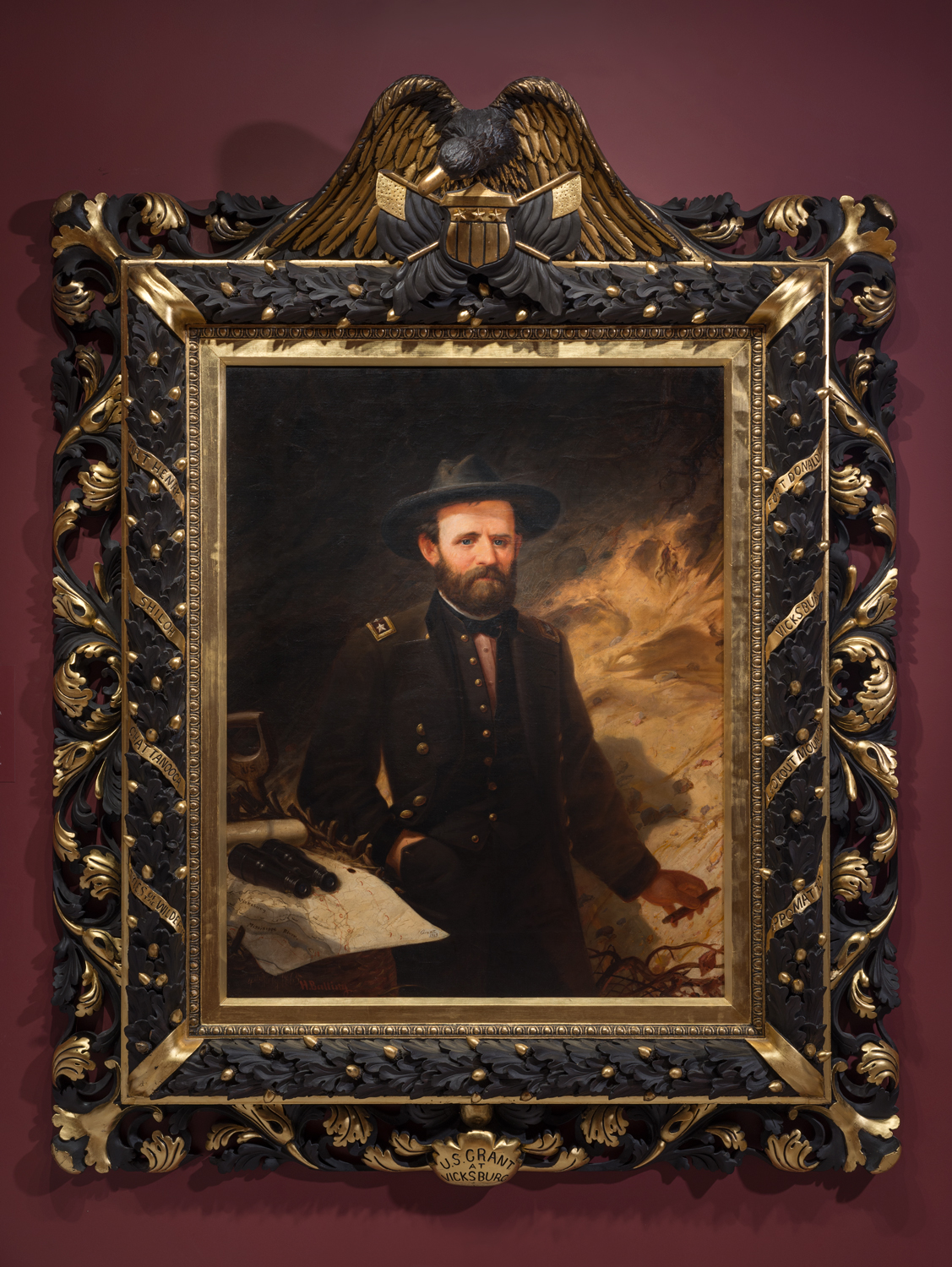Frame It, Spin It

The annual pilgrimage to the National Portrait Gallery with my 7th grade U.S. History students is always the highlight of my spring semester. The Portrait Gallery's true beauty is its focus on storytelling, as each student is able to connect his or her personal story with one in the museum. Some discover paintings of ancestors, others find their heroes, and still others greet certain portraits like old friends. Year after year, we manage to spend the most time with one painting in particular—although I’m not convinced it is the painting, or even the subject, that is so arresting. My students love to talk about the frame. The portrait of Ulysses S. Grant by Ole Peter Hansen Balling is rich with objects telling the story of Grant’s muddy victory in Vicksburg; yet the frame itself is also a work of art. The eye can’t help but follow the carved ribbon as it gently winds around the canvas cradled in oak leaves, declaring the significant victories of the Union Army. The gold hues emanating from the eagle are soft and cast a glow on the face of the subject, causing one’s gaze to travel the whole length of the composition. It is hard to imagine this portrait apart from its frame.
My students spend much of their spring quarter crafting a research paper on a significant U.S. figure. Their task is difficult: how does one take a lifetime of information and accomplishments and distill it in four pages? For that matter, how does an artist capture the essence of a person on a single canvas? This year, I used Grant’s portrait and frame as a way to talk about writing with my students.
An author, like an artist, must settle on a point of view—a perspective that can only tell part of the story. To write or to paint is an exercise in restraint. For every word on the page, a dozen may have been considered and found lacking. There is a finitude in good art. It embraces the limits of its own medium and, in so doing, can express the infinite.
When I teach my students about the art and mechanics of writing, we now use Grant’s portrait as a reminder of how to limit the scope and focus of our work, to choose a few elements and execute them with precision and intention. Balling captured a single moment to commemorate a battle lasting seven weeks and involving over 110,000 soldiers. The cigar, field glasses resting on a map, and shovel set against the backdrop of earth works are all that are necessary to tell this part of the story. Balling does not allow the viewer to see the city, the great Mississippi River, or even the General’s dusty boots. There is precisely enough to tell the tale and no more.
Teaching moments like this seem serendipitous. They happen when we least expect, but they are born from interactions with something true, good, and beautiful. As teachers, it’s important to find such reminders. It is terribly hard to muster fresh ideas when we are confined to staid curriculum. So the next time you have a chance to stop by the National Portrait Gallery, I hope you find something that inspires you, too.